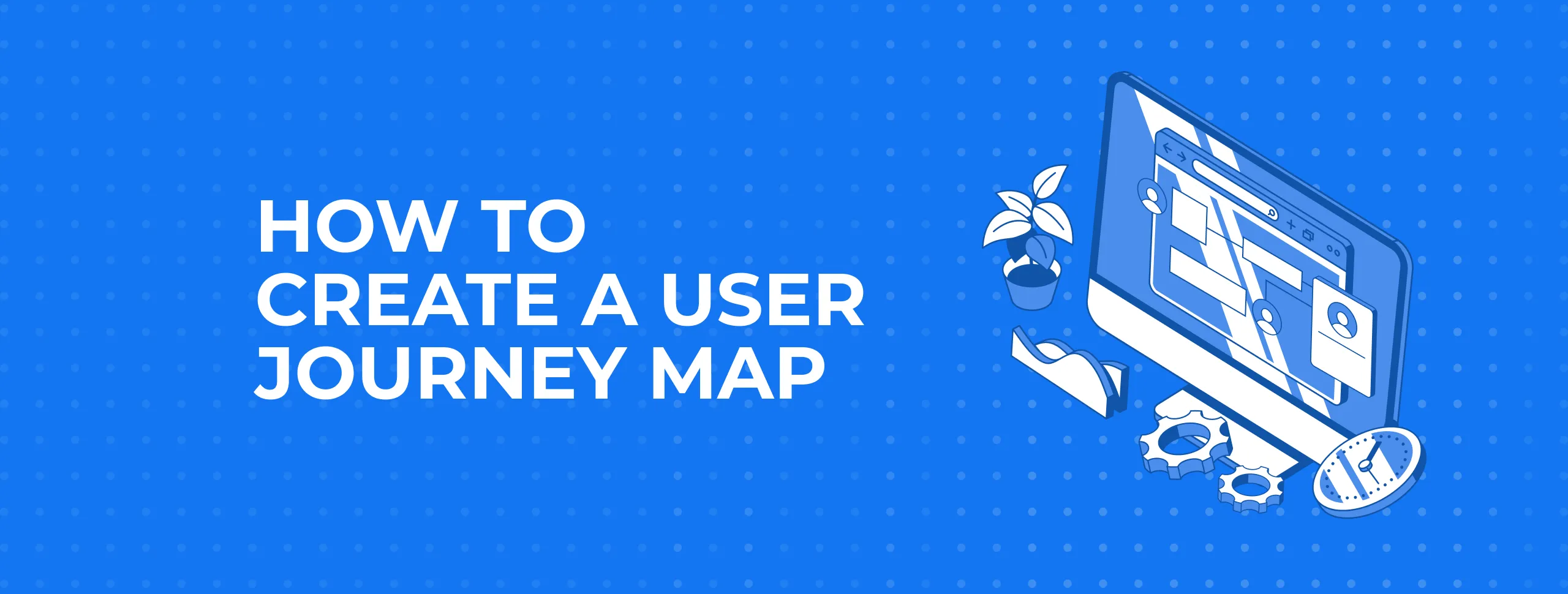
How to Create a User Journey Map

In this article, we collect and summarise all the information about user journey mapping and try to explain how and why we use them. Let's begin.
What Are User Journey Maps and How are they Used?
Today every individual interacts with dozens of businesses and services via different channels; we choose them according to the client’s goals and decisions.
For example, you can order pizza through a website, get a confirmation via SMS on your phone and then take the pizza from the courier and pay for it by card. This is the simplest example of an interaction cycle, and every day we encounter many similar situations. You can find examples of more complex cycles and simpler ones.
But what is a journey map? The keyword is "map", so the journey map can be considered as a visual representation of the complete interaction cycle. It reflects the experience of the user during certain time intervals through various channels and connects with the company, product, brand or service.
Typically, the map is designed from the user's point of view, with the emphasis falling on his or her thoughts and feelings at each stage of interaction. At the same time, the map often takes into account the intersection of user interests and business needs.
When working on journey maps, you can choose different time intervals (longer or shorter), channels and points of contact, as these details depend on a particular type of business, product or service and task.
Why Do You Need Customer Journey Mapping?
A user journey map is an inexhaustible resource for improving the user interaction experience, which helps build a strong and long-lasting relationship between the client and the brand or product and, as a result, helps increase revenue in the long term.
User mapping can be successfully applied by different project participants.
- If you’re an UI designer, you will better understand the context in which the product or service is used. Also, designers will gain a deeper insight into devices and channel transitions. This helps to avoid differences when switching between devices and create new points of interaction or updates in terms of UX-design.
- If you’re in management or sales, journey maps will help you see how the customer is moving along the sales funnel and improve this interaction, sell additional services, add points of contact, simplify the sales stages or increase some of the conversion rates. Top management representatives will get an idea of how to improve business processes and provide better services to customers.
- If you’re a customer service representative, journey maps will help you provide quality customer service and support across all channels, which will in turn allow you to build an army of dedicated brand fans who will leave positive feedback about your services or product.
In general, companies practice mapping to integrate customer needs into their DNA so that each team member gains a better understanding of what their clients need and feel.
The Process of User Journey Mapping
The process of creating a journey map can consist of more or less detailed stages and iterations, but in general it looks like this:
1. Define the Main Goals and Participants of the Process.
You can identify the most important goals of a product or service and divide them into more detailed goals, based on customer or product types, if your company offers several products.
2. Identify Users, Interaction Points, Channels and Transition stages.
This is the most important part. At this stage, you need to create an image of the target user or users you’re working with and identify the most important points of interaction through different channels and the different stages of the future map.
3. Investigate and Analyse the Data.
At this point, you should collect the maximum amount of data. You can use different tools - it all depends on the type of product or service you offer. You can conduct personal interviews or interview focus groups and collect data while customers are using it. If it’s a digital product (site or application), you can conduct polls that are integrated interactively into the product. Any approach will work here if it helps you understand what clients need, how they think and what they feel at different points and channels of interaction. Evaluate the client's experience from negative to positive and on the basis of analysis determine the efficiency of the user's satisfaction in order to measure it in the future and apply it in visualising the map. Identify weaknesses and ways of improvement.
4. Create a Map
Combine the data you’ve collected into one structured map. You can use ready-made templates or online tools that will help visualise user journeys. There is no single template: the basic idea is that the map is easy to read and can be updated. You can use, for example, Uxpressia templates, structured by industry or business type.
5. Present the Map to the Project Participants, Work with It, Improve and Revise.
Once the map is ready, your company and project team can use it as a resource for process improvement. Check from time to time how the current user experience relates to what is depicted on the map, update it and check the efficiency of customer satisfaction. It can also be used to meet the strategic and tactical needs of sales, marketing, product management, UX and customer service.
Tools and Utilities
At the research and sketching stage, the most accessible and effective tools are a pen and paper! You can also use a board, stickers and coloured markers.
Then, at the final visualisation stage, you can use various visual or graphic editors.
For example:
Or use an online tool to create a navigation map:
Here is the review for the most popular customer journey mapping tools.
Conclusion
User mapping will be a long-term investment of your time and resources and will help build a strong relationship with your customers, as well as ensuring the competitiveness of your products or services.
If you don’t know where to start, we’re always ready to provide a full range of UX and UI design services, including user mapping and an interaction design strategy for your digital products.





